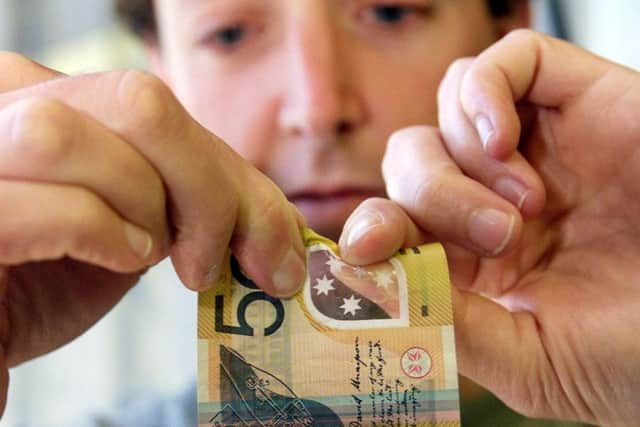Bank of Scotland to switch to plastic bank notes


But that disappointment could soon be a thing of the past after Bank of Scotland announced its next £5 and £10 notes will be printed on plastic.
It becomes the second bank in Scotland, after Clydesdale, to issue notes printed on polymer which, according to the bank, are more durable than traditional paper notes.
Advertisement
Hide AdAdvertisement
Hide AdThe Bank of Scotland, which has been issuing bank notes in the country for over 300 years, says the new notes will incorporate “advanced security features,” making them more difficult to counterfeit, as well as being able to survive a trip in the washing machine.


The first 50 of the new notes, issued in November, will be limited edition and auctioned off to raise money for BBC Children in Need.
The notes will feature the designs from winners of a children’s competition that is being launched today.
The design of the main replacement polymer £5 note, which will still feature Sir Walter Scott and The Mound on the front, will also be unveiled before the end of this year with the note issued in the second half of 2016.
It will be followed around a year later by the polymer £10 note.
Bank of Scotland was one of the first banks in Europe to successfully issue bank notes, a year after it was founded by an Act of Parliament in 1695.
According to the bank, polymer bank notes are more environmentally friendly and because they last longer are, over time, cheaper than paper bank notes.
Being thin and flexible, they should be able to fit into wallets and purses as easily as paper bank notes.
Advertisement
Hide AdAdvertisement
Hide AdRobin Bulloch, managing director of Bank of Scotland, said: “Bank of Scotland has been issuing bank notes for over 300 years and we take seriously our responsibility to create good- quality genuine bank notes that can be used with confidence.
“Polymer notes are cleaner, more secure and more durable than paper notes. They will provide enhanced counterfeit resilience and increase the quality of Bank of Scotland notes in circulation.
“Our very first polymer note will be the limited edition fiver to celebrate our partnership with BBC Children in Need and this will be out at the end of this year.
“This will be the first time the designs of children have been incorporated on a Scottish bank note.”
Mary Duffy, head of BBC Children in Need Scotland added: “We are delighted to be involved with the launch of these new notes and as a judge on the panel I look forward to seeing some of the exciting submissions from our young designers.
“Every penny raised from the auction will go towards projects helping disadvantaged children and young people, allowing Children in Need to make a difference to as many young lives as possible.”
According to champions of the new bank notes, the waterproof and crumple-free money will last 2.5 times longer than paper notes
But polymer notes are not without controversy and previous research by European scientists suggested that the bank notes may “provide a breeding ground” for diseases such as E.coli and also the MRSA superbug.
Advertisement
Hide AdAdvertisement
Hide AdThe findings, by Turkish and Dutch scientists, found polymer notes held traces of MRSA for up to 24 hours, 21 hours longer than any other currency.
The last design of Bank of Scotland notes were issued in 2007 and featured the common theme of Scottish bridges. There have been 47 previous separate series of notes issued by the bank.
The Children in Need bank note competition will be judged in Edinburgh on 26 June by a panel including Bank of Scotland, Education Scotland and BBC Children in Need.